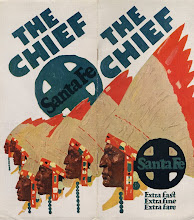
 These two vintage postcards were published in Gyoma, Hungary by Isador Kner, ca. 1918. XB1992.156.2 ; XB1992.156.3
These two vintage postcards were published in Gyoma, Hungary by Isador Kner, ca. 1918. XB1992.156.2 ; XB1992.156.3The Wolfsonian Library-Florida International University, 1001 Washington Avenue, Miami Beach, Florida 33139 U.S.A.

 These two vintage postcards were published in Gyoma, Hungary by Isador Kner, ca. 1918. XB1992.156.2 ; XB1992.156.3
These two vintage postcards were published in Gyoma, Hungary by Isador Kner, ca. 1918. XB1992.156.2 ; XB1992.156.3





This week a Florida International University student in the Honor’s College came to the museum to schedule a research appointment in our rare books and special collections library. In the course of our reference interview, the student expressed interest in seeing what we might have in the library pertaining to “vintage” tobacco advertising. He had decided to work on a project that would examine how tobacco companies marketed their products in early to mid-twentieth century, and how their claims then compare to those being made in present-day “pro” and “con” tobacco propaganda. The library holds a good run of Fortune magazine from the 1930s, many of which had back cover advertisements from various tobacco companies. Above is one example from our collection.
For any bloggers interested in doing their own comparisons of the same, I recommend checking out the many anti-tobacco “Truth” campaign videos readily available via Youtube.com. Here’s one of my personal favorites:
As a movie buff (fanatic?) I can also heartily recommend Thank You For Smoking for an enormously entertaining look at (and biting satire of) tobacco industry spin doctors, directed by Jason Reitman in 2005.





 The students were also intrigued by other materials marketing other fashion products. Many of the students were both simultaneously entranced and taken aback by a ninety year-old advertisement for fur coats and stoles that pictured the “cute and cuddly” animals on the same front cover as the glamour girl showing off the product. Obviously the counter-commercial propaganda of animal rights organizations and activist group like PETA (People for the Ethical Treatment of Animals) has had a powerful and enduring influence on attitudes towards fur as fashion.
The students were also intrigued by other materials marketing other fashion products. Many of the students were both simultaneously entranced and taken aback by a ninety year-old advertisement for fur coats and stoles that pictured the “cute and cuddly” animals on the same front cover as the glamour girl showing off the product. Obviously the counter-commercial propaganda of animal rights organizations and activist group like PETA (People for the Ethical Treatment of Animals) has had a powerful and enduring influence on attitudes towards fur as fashion.

